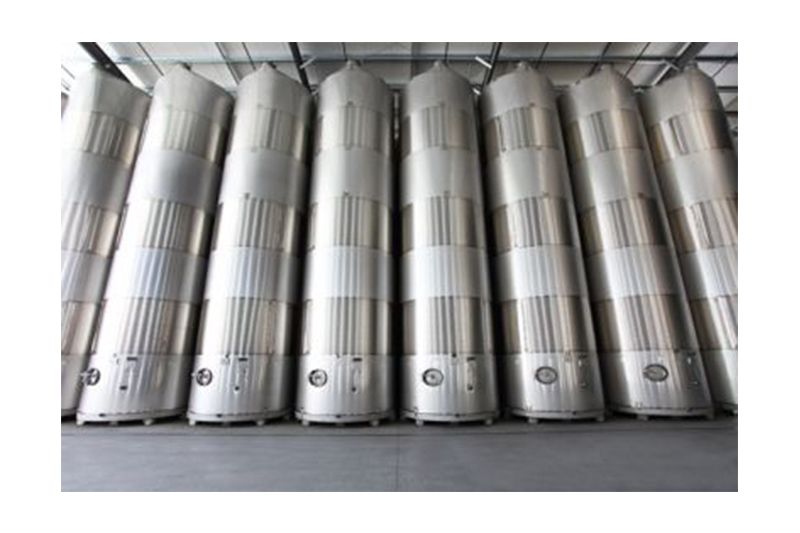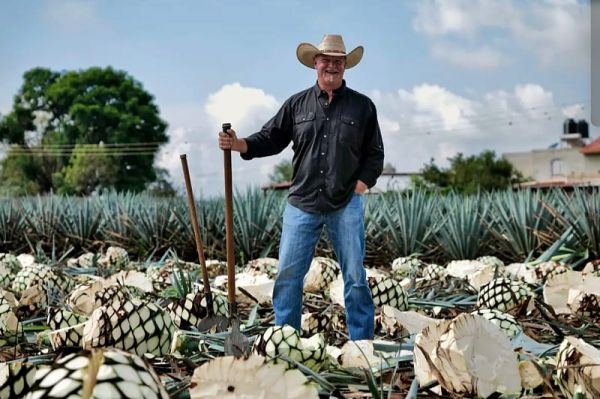Log in to your account
Lost password?Sales and Marketing
How Draxton Wines Learned to Embrace the Bulk Wine Market
This winery turned their business around using bulk wine as a strategy.
04/09/2017

For most wineries, the decision to enter the bulk wine market is serendipitous rather than planned. It usually happens when shifting market conditions completely change the parameters of a winery's business model, forcing it to embrace other strategies. But once the winery embraces the bulk wine market, there's often no going back.
Consider the case of Draxton Wines, a small, family-run business in Healdsburg, California. The winery had been producing limited quantities of wine for the branded market for more than 20 years when the economic recession of 2008-2009 suddenly led it to consider the bulk market as a way to solve its cash flow problems.

How Draxton Wines’ business evolved from 2009-2017
The original business started as a small production brand back in 1995. At that time, the company began to produce 60 to 100 tons of wine per year. On average, that amounted to 4,000 to 5,000 cases of wine (approximately 40 to 50 tons) bottled for the consumer market, with an excess of approximately 7,000-9,000 gallons annually (approximately 40 to 50 tons).
At a time when customers were willing to pay a premium for its wines, that strategy made sense. By 2009, however, the economic downturn was changing consumer buying behavior and the struggling business needed to find a new cash flow source. The company would either have to make full use of its excess production or find some new source of revenue.
The solution to the problem was the creation of a custom crush service for growers (CSG) for sale on the bulk wine market, with profit sharing incentives. In the first year (2009), the company crushed 1,200 tons for the open bulk market. Case good production was 2,000 cases (20-25 tons).
By the third year, the CSG was crushing 3,500 tons (612,500 gallons) for the open bulk market, with 500 tons purchased for production wine contract (PWC) for winery or negociant. All told, a total of 4,000 tons (700,000 gallons) was processed. That means that, in the time span of just three years, the company had nearly tripled its production for the bulk wine market.

By the fifth year, the CSG was crushing 3,000 tons (525,000 gallons) for the open bulk market, with 4,000 tons (700,000 gallons) purchased for production wine contract (PWC) for winery or negociant. On an annual basis, 7,000 tons (1,225,000 gallons) were processed. By the fifth year, case goods sales were almost nonexistent, due to the primary focus on the growth of the bulk market business strategy.
In a span of just five years, then, production had expanded nearly six-fold (from 1,200 to 7,000 tons). But that wasn't the end of the story. In the eighth year of the new strategy, the CSG crushed 1,500 tons (262,500 gallons) for the open bulk market, and 8,500 tons were purchased for production wine contract (PWC) for winery or negociant. All told, 10,000 tons (1,750,000 gallons) were processed.

Effects of the new bulk market strategy on the winery's operations
Not surprisingly, the shift of focus to the bulk wine market led to a re-thinking of the winery's business model. The original business had a tough time competing in the existing market primarily due to the economic downturn of 2008-2009, which created more pressure from large production wineries with increased marketing dollars and discounting programs to wholesalers. At the same time, there was an increase in the number of brands competing for market share.
The original plan - to compete directly with the large production wineries - was simply not possible due to a lack of resources to carry out needed relationships with wholesalers. At a time when Draxton Wines was already struggling with a shrinking market, it didn't have the financial or staffing resources to go head-to-head with much larger wineries.

The advantages of the bulk wine strategy for Draxton Wines
However, Draxton Wines found that selling in bulk eliminates the need for marketing and PR dollars. The goal was no longer to go after consumers in the branded wine market - the new goal was to lock down important new production contracts. Moreover, cash was no longer tied up in bottling, dried goods, and warehousing. That immediately freed up extra cash flow that could be used to create the CSG.

From a financial perspective, the shift to a new business model led owner, Mike Draxton to-rethink its cash flow projections. While branded market cash flow analysis was based on projected sales to the consumer market, the bulk market cash flow analysis was based on the cost of goods sold and administrative costs to carry out the bulk wine contracts.
And factors of supply and demand also played a role. With the bulk market model, it became easier to plan over long periods of time. In short, pricing could be determined in advance, reducing the variability in pricing from year to year. A preset contract price allows for more accurate budget projections for grapes and production.

And the shift to the bulk market model also reduced the amount of cash flow and labor required for operations. By its very nature, a bulk market model requires fewer employees. And it also leads to a faster return on capital since money is not tied up in aging, bottling, warehousing, and marketing.
Looking back at the decision to embrace the bulk wine market
In many ways, the decision to embrace the bulk market over the branded market was based on a fundamental economic choice of whether it is better to run a high-volume, low-margin business or a low-volume, high-margin business. With a bulk market model, Draxton Wines had fewer clients but more repeat business. Moreover, it no longer had to allocate budget dollars to marketing and PR, giving it a completely different cost structure that enabled it to free up resources for additional production.
Would Draxton Wines do it again the same way, if it had a choice? "Knowing what we know now, absolutely, there's no question," says Mark Draxton, the founder, owner and winemaker of Draxton Wines. "In many ways, the economic recession blindsided us back in 2008-2009 and we were fortunate to discover the bulk market."
That's an important lesson for small wineries struggling to compete in a very fragmented and competitive marketplace. When times are good, it's easy to think that a high-margin business will be sustainable over the long haul. But once market conditions shift, that's when the ability to pivot to a new, more flexible economic model makes the most sense.

For most wineries, the decision to enter the bulk wine market is serendipitous rather than planned. It usually happens when shifting market conditions completely change the parameters of a winery's business model, forcing it to embrace other strategies. But once the winery embraces the bulk wine market, there's often no going back.
Consider the case of Draxton Wines, a small, family-run business in Healdsburg, California. The winery had been producing limited quantities of wine for the branded market for more than 20 years when the economic recession of 2008-2009 suddenly led it to consider the bulk market as a way to solve its cash flow problems.
















